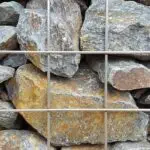The article examines the potential of kratom, particularly its alkaloids mitragynine and 7-hydroxymitragynine, in managing gout, a condition characterized by sudden and intense joint pain due to uric acid crystals. Kratom's anti-inflammatory and analgesic properties may offer relief for gout sufferers by interacting with opioid receptors and potentially affecting uric acid levels. While these benefits are promising, it is important to approach kratom use with caution due to its psychoactive effects and the need for further clinical research to fully understand its efficacy and safety. The physical health benefits of kratom should be considered as a complementary part of a comprehensive gout management strategy, alongside conventional treatments and lifestyle modifications. Medical advice is essential before incorporating kratom into treatment plans, as it may interact with other medications and carry side effects. Ongoing studies are crucial for establishing kratom's role in gout care within a medically supervised context.
navigating the complexities of gout management, individuals seek effective strategies to mitigate its impact on their physical well-being. This article delves into the integration of Kratom as a potential aid in managing gout. We explore the science behind its purported benefits, provide insights into gout’s symptoms and causes, and offer guidance on how Kratom can be harmoniously incorporated into a holistic health regimen. The physical health benefits of Kratom, when carefully considered within a comprehensive management plan, may offer significant relief for those grappling with this challenging condition.
- Unraveling Gout Management: The Role of Kratom in Alleviating Physical Health Concerns
- Understanding Gout: Symptoms, Causes, and the Science Behind Kratom's Potential Benefits
- A Comprehensive Guide to Integrating Kratom into a Holistic Gout Management Plan
Unraveling Gout Management: The Role of Kratom in Alleviating Physical Health Concerns

Gout, a complex inflammatory arthritis characterized by recurrent episodes of acute inflammatory arthritis, often affects one or more joints. Effective gout management is crucial for alleviating the physical health concerns associated with this condition. In recent times, the potential role of kratom, a tropical evergreen tree native to Southeast Asia, has garnered attention in the realm of alternative therapies for gout. Kratom leaves contain various alkaloids, with mitragynine and 7-hydroxymitragynine being the most abundant. These compounds have been studied for their analgesic properties, which may offer relief to gout sufferers.
The physical health benefits of kratom are attributed to its anti-inflammatory and pain-relieving effects, which can be particularly beneficial for managing gout symptoms. Research suggests that kratom interacts with opioid receptors in the brain, which can help alleviate the severe pain associated with gout attacks. Moreover, its potential to reduce inflammation could contribute to the overall management of the condition. However, it is essential to approach the use of kratom with caution and under medical supervision due to its psychoactive effects and the need for further clinical trials to establish its efficacy and safety in gout management. Integrating kratom into a comprehensive treatment plan that includes lifestyle modifications, medication, and other therapeutic approaches may offer a well-rounded strategy for those experiencing physical health challenges due to gout.
Understanding Gout: Symptoms, Causes, and the Science Behind Kratom's Potential Benefits

Gout is a complex form of arthritis characterized by sudden, severe pain and inflammation in the joints, often accompanied by redness and swelling. The condition typically affects one joint at a time, with the big toe being a common initial site. It occurs when elevated levels of uric acid crystals accumulate in the joint, leading to acute episodes of pain. The causes of gout are multifaceted, involving genetic predisposition and lifestyle factors such as diet, alcohol consumption, and obesity, which can increase uric acid production or hinder its elimination from the body.
The physical health benefits of kratom, a tropical plant native to Southeast Asia, have been the subject of growing interest among researchers and those managing gout. Kratom contains alkaloids, such as mitragynine and 7-hydroxymitragynine, which have been studied for their potential analgesic and anti-inflammatory properties. These compounds may help manage the pain and inflammation associated with gout by influencing the opioid receptors in the brain and modulating the body’s immune response. Preliminary research suggests that kratom could potentially play a role in gout management due to its effects on uric acid levels and symptom relief. However, it is crucial for individuals to consult healthcare professionals before incorporating kratom into their treatment regimen, as it can have side effects and interactions with other medications. The scientific community continues to investigate the efficacy and safety of kratom in the context of gout management, weighing its potential benefits against the necessary regulatory oversight.
A Comprehensive Guide to Integrating Kratom into a Holistic Gout Management Plan

In conclusion, effective gout management necessitates a multifaceted approach that addresses both the symptoms and underlying causes of this condition. The exploration into how kratom may alleviate physical health concerns associated with gout offers promising insights. Its potential benefits, rooted in scientific understanding, suggest that when carefully integrated into a holistic treatment plan, kratom could play a valuable role in managing gout’s impact on one’s well-being. It is imperative for individuals to consult healthcare professionals before incorporating kratom or any new supplement into their regimen to ensure safe and effective management of this ailment. The physical health benefits of kratom, as outlined in this article, underscore its potential as part of a comprehensive gout management strategy.






